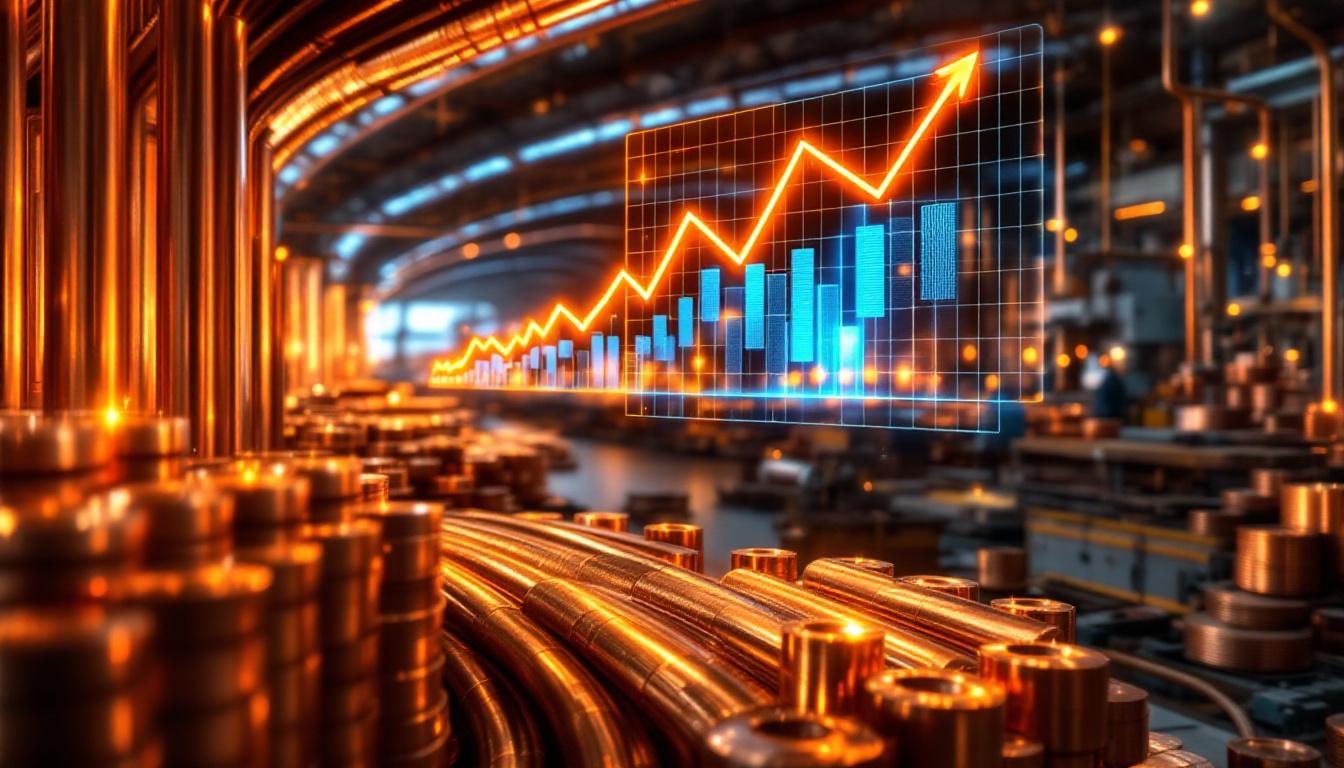How Do Israel-Iran Tensions Affect Global Oil Prices?
Understanding the Strategic Importance of Middle Eastern Oil
Regional conflicts in the Middle East have historically been a major driver of global energy market volatility. This is particularly true when tensions escalate between major players like Israel and Iran, creating ripple effects across the entire oil supply chain.
The Strait of Hormuz represents one of the world's most critical oil transit chokepoints, with approximately 20-25% of global oil and natural gas shipping passing through this narrow waterway. This strategic passage serves as the primary export route for Saudi Arabia, Iraq, UAE, Kuwait, and Iran – nations that collectively account for a substantial portion of global oil production.
"Any disruption to the Strait of Hormuz would have immediate and severe repercussions for global energy markets," notes Peter Boockvar, Chief Investment Officer at Bleakley Financial Group. "However, I don't think it's in anybody's interest to have a disruption in oil delivery… Iran depends on oil revenue as its main source."
Historical data demonstrates a clear correlation between Middle Eastern geopolitical tensions and oil price crash analysis. During the 1990 Gulf War, oil prices spiked by an astonishing 160% in just three months as market participants priced in supply disruptions.
Analyzing Recent Price Movements in Response to Tensions
The recent escalation between Israel and Iran has triggered significant volatility in global oil markets. Prior to these tensions, oil had settled into the low $60s per barrel, a level that many analysts considered technically oversold.
As the conflict intensified, prices surged beyond $70 per barrel within weeks – a clear demonstration of the risk premium that geopolitical uncertainty adds to energy markets. This price movement reflects both actual supply concerns and market psychology that amplifies price swings beyond fundamental supply-demand factors.
"If oil's at $70-$75, it's not going to have that much of an impact on inflation," explains Boockvar. "But if it goes to $80-plus, that can flow through to gasoline prices and create broader economic challenges."
Institutional investors and hedge funds have taken markedly different approaches to this volatility. While some have established strategic long positions anticipating further escalation, others view the current premium as temporary and likely to fade if direct disruptions to oil flow don't materialize.
The Strait of Hormuz Factor: Risk Assessment
The Strait of Hormuz represents perhaps the most vulnerable chokepoint in global oil markets. At its narrowest point, this waterway spans just 21 miles, yet it controls access to approximately 21 million barrels of oil per day – roughly 21% of global petroleum liquids consumption.
Market analysts have developed several risk scenarios based on potential disruptions to this crucial shipping lane. Experts project that a complete closure could send oil prices soaring to $100-$125 per barrel, creating significant economic shockwaves.
"I don't think that Iran will close the Strait," notes Boockvar. "China's begging them not to, the U.S. maintains substantial military presence as deterrence, and it's not in their interest to lose that revenue."
Major oil-importing nations have developed sophisticated risk mitigation strategies, including strategic petroleum reserves (SPRs) that could be deployed to offset short-term supply disruptions. The U.S. alone maintains approximately 347 million barrels in its SPR, providing a significant buffer against temporary supply shocks.
Risk Assessment Note: While a complete closure of the Strait of Hormuz remains unlikely, even temporary disruptions or increased insurance costs for tankers transiting the region could add $5-10 per barrel to global oil prices.
What's Driving Current Oil Market Fundamentals Beyond Geopolitics?
Supply-Side Constraints Creating Price Support
While geopolitical tensions grab headlines, several fundamental supply factors are creating structural support for oil prices. The industry has witnessed seven consecutive weeks of declining U.S. rig counts – a leading indicator of future production capacity that suggests output growth may be stalling.
This decline isn't merely a response to price signals but potentially indicates deeper geological limitations in key production regions. According to the U.S. Energy Information Administration's Productivity Analysis Report, parent-child well interference in the Permian Basin has reduced per-well productivity by approximately 15% year-over-year despite continued technological improvements.
"We're hearing from oil companies themselves talking about peak U.S. shale production – both from a price perspective but also from a geological perspective," explains Boockvar. "The easy-to-access reserves have largely been exploited, and new wells aren't delivering the same returns."
OPEC production hike decisions further complicate the supply picture. While the cartel has announced quota increases of approximately 411,000 barrels each time, these haven't materialized in actual production volumes. This suggests that several OPEC members may already be producing at or near capacity, limiting their ability to increase output regardless of quota adjustments.
Technical analysis indicates that oil became significantly oversold when it dropped into the low $60s range, creating a foundation for the recent price recovery independent of geopolitical factors.
Demand Outlook and Economic Indicators
Post-pandemic consumption patterns continue to evolve, with global oil demand showing resilience despite economic uncertainties. Transportation sector transitions are creating unexpected demand dynamics, with hybrid vehicles gaining substantial market share over pure electric vehicles.
"Hybrids are sort of winning the war with EVs, which has significant implications for oil demand," notes Boockvar. According to BloombergNEF data from May 2025, hybrids now account for approximately 45% of new U.S. auto sales, creating a more gradual transition away from petroleum-based fuels than many had projected.
Seasonal factors are currently supportive of oil prices as summer driving season approaches in the Northern Hemisphere. This annual demand surge typically adds 1-2 million barrels per day to global consumption between June and September.
Inflation data and energy consumption patterns show an increasingly complex relationship. While high energy prices can contribute to inflation, economic slowdowns resulting from inflationary pressures can subsequently reduce energy demand – creating a self-limiting cycle that helps explain some of oil's recent price ceilings.
Market Participant Positioning and Sentiment
Institutional investor positioning in energy markets has shifted significantly in recent months. After reducing exposure throughout 2024 as prices declined, many major funds have reestablished long positions during the recent geopolitical tensions.
Hedge fund and speculative positioning in oil futures shows a net long position of approximately 350,000 contracts – a moderately bullish stance but well below historical peaks of over 500,000 contracts seen during previous Middle Eastern conflicts.
Commercial hedging activities have increased notably, with producers locking in current prices as a risk management strategy. This hedging pressure creates natural resistance to further price increases unless disruptions actually materialize.
Retail investor sentiment indicators suggest growing interest in energy sector investments, with oil and gas ETF inflows reaching $2.4 billion in the past month – their highest level since 2022.
How Are Precious Metals Responding to Geopolitical Uncertainty?
Gold's Performance During Regional Conflicts
Gold has reinforced its status as the premier safe-haven asset during the recent Israel-Iran tensions. Price movements show a clear correlation with escalation events, with gold gaining approximately 3.5% during the initial phase of heightened tensions.
According to recent European Central Bank data, gold has now surpassed the euro to become the second-largest reserve holding for central banks globally. This structural shift in reserve composition reflects growing institutional confidence in gold's role as a store of value during periods of geopolitical and monetary uncertainty.
"The end of the bull market in gold is not here yet," states Boockvar. "The prices that do sort of end that bull market will surprise people – we're not close to those levels yet."
Technical analysis of gold's current price structure shows strong support at $2,400 per ounce, with resistance at $2,500 representing the next significant hurdle. The metal's ability to hold above key moving averages throughout recent market volatility demonstrates underlying strength beyond short-term safe-haven buying.
Central bank purchasing trends have been particularly supportive, with official sector acquisitions exceeding 1,000 tons in 2024 according to World Gold Council data. This represents a continuation of a multi-year trend that has fundamentally altered the supply-demand dynamics of the gold market.
Silver Market Dynamics and Price Outlook
Silver has experienced a remarkable transformation from market laggard to outperformer, climbing to $36 per ounce after years of underperformance relative to gold. This level still represents a significant discount to silver's historical high of $50 reached in 2011.
"Silver certainly has begun to play some catchup… I still expect much higher prices," notes Boockvar. This projection is supported by silver's unique demand profile – approximately 50% industrial and 50% investment-driven – creating dual catalysts for price appreciation.
Industrial demand factors remain particularly strong, with silver's essential role in photovoltaic cells, electric vehicle components, and electronic devices creating consistent consumption growth. The global push toward renewable energy infrastructure has emerged as a significant driver of industrial silver demand.
Investment demand patterns show increased interest from both institutional and retail participants. Silver ETF holdings have increased by 8.4% year-to-date, indicating growing recognition of silver's potential both as an industrial metal and monetary asset.
Supply deficits have persisted for three consecutive years, with mining production struggling to keep pace with rising demand. This fundamental imbalance provides structural support for continued price appreciation, particularly if investment demand accelerates further.
Platinum's Overlooked Potential
Platinum represents perhaps the most overlooked opportunity in the precious metals sector. Currently trading around $1,200 per ounce, platinum remains well below its historical high of $1,900 reached in 2011 despite three consecutive years of supply deficits.
"Hybrids are sort of winning the war with EVs and they use as much if not more platinum per vehicle… that's a pretty bullish case," explains Boockvar. This unexpected demand driver has emerged as hybrid vehicles gain market share, contradicting earlier projections that automotive platinum demand would decline in an EV-dominated future.
The comparative value proposition versus gold and silver is particularly compelling. Platinum historically traded at a premium to gold, yet currently sits at a substantial discount – a situation many analysts consider unsustainable given the metal's industrial importance and supply constraints.
Mining challenges in South Africa, which accounts for over 70% of global platinum production, continue to support the bullish case. Power supply issues, labor disputes, and declining ore grades have created persistent production challenges that are unlikely to resolve in the near term.
Investment Insight: While gold and silver receive most media attention, platinum's combination of industrial demand, supply deficits, and relative undervaluation may present the most compelling risk-reward profile in the precious metals sector.
What Are the Broader Economic Implications of Middle East Tensions?
Inflation Concerns and Central Bank Responses
Oil price increases resulting from Middle East tensions potentially complicate Federal Reserve policy decisions by introducing inflationary pressures at a time when central banks are contemplating rate cuts. Current U.S. inflation stands at 3.2% year-over-year according to the latest Bureau of Labor Statistics data.
The transmission mechanism from oil prices to broader inflation is well-established. According to Federal Reserve Bank of St. Louis research, a 10% increase in oil prices typically leads to a 0.3-0.4 percentage point increase in CPI after one year – a meaningful impact when central banks are targeting 2% inflation.
"If oil's at $70-$75, it's not going to have that much of an impact on inflation, but if it goes to $80-plus, that can flow through to gasoline prices and create broader economic challenges," notes Boockvar.
The Federal Reserve's current stance on interest rates reflects this delicate balance. While economic growth concerns would typically prompt rate cuts, persistently high energy prices could delay such moves by keeping inflation above target levels.
Boockvar suggests that "the main catalyst for Fed rate cuts would be a rise in the unemployment rate to 4.5% or more," indicating that labor market weakness would likely outweigh energy-driven inflation concerns in the Fed's policy calculus.
Bond Market Reactions and Sovereign Debt Concerns
The 10-year Treasury yield currently sits near 4.5%, reflecting both inflation concerns and growing awareness of sovereign debt challenges. Bond market participants are increasingly focused on the fiscal implications of persistent deficits and rising interest expenses.
"There's risk of yields rising to 4.75-5% in response to inflation concerns," cautions Boockvar. Such a move would further increase government borrowing costs and potentially trigger broader market volatility.
Sovereign bond markets globally show signs of stress, with UK gilts and Japanese JGBs experiencing heightened volatility. This suggests growing investor concern about government debt sustainability across developed economies.
Budget deficit implications are particularly worrisome. "The U.S. budget deficit is currently about 7% of GDP, but could expand to 10-12% during an economic slowdown," notes Boockvar. Such an expansion would further strain an already challenging fiscal situation and potentially trigger more significant bond market reactions.
Historical analysis suggests that periods of fiscal expansion combined with elevated energy prices have typically led to steeper yield curves and higher long-term interest rates – precisely the scenario that appears to be developing currently.
Trade Policy Complications
Tariff market impact adds another layer of complexity to the economic outlook. Proposed or implemented trade restrictions could potentially amplify the negative economic impact of higher energy prices by increasing input costs across multiple sectors.
"I'm worried about tariffs and their negative impact on economic activity which could result in an economic downturn," explains Boockvar. This combination of supply-side inflation (from energy and tariffs) alongside weakening demand presents a particularly challenging environment for policymakers.
Global supply chain resilience is being tested by this combination of geopolitical and trade pressures. While supply chains have largely normalized post-pandemic, the combination of Middle East tensions and trade restrictions threatens to introduce new disruptions.
Trade policy interactions with energy markets are particularly concerning. Higher tariffs on Chinese goods could prompt retaliatory measures affecting US oil production decline, creating additional market distortions beyond the direct impact of Middle East tensions.
How Should Investors Position Their Portfolios?
Strategic Asset Allocation Considerations
Diversification strategies take on heightened importance during periods of geopolitical uncertainty. Historical analysis from the Journal of Portfolio Management demonstrates that a 60/40 portfolio with a 10% allocation to gold reduced volatility by approximately 15% during previous geopolitical crises.
Appropriate exposure to the energy sector requires careful calibration. According to a recent Bloomberg survey of Chief Investment Officers, the average recommended allocation to energy is currently 8-12% of equity portfolios – higher than the sector's approximately 4% weight in the S&P 500.
Precious metals allocation recommendations have similarly increased, with the same survey suggesting 5-10% portfolio exposure to gold and silver combined. This represents a significant increase from the typical 2-3% allocation recommended during periods of relative stability.
Fixed income positioning presents particular challenges in the current environment. "I'm looking at rate moves as tweaks rather than the beginning of a massive rate cutting cycle," cautions Boockvar. This suggests maintaining shorter duration exposures and considering inflation-protected securities as part of fixed income allocations.
Regular portfolio rebalancing takes on additional importance during volatile markets. Research from Vanguard demonstrates that disciplined rebalancing during the 2020 pandemic added approximately 0.5% in annualized returns compared to static allocations.
Specific Investment Opportunities in the Energy Sector
Oil producers with strong balance sheets and production flexibility appear particularly well-positioned in the current environment. Companies with low debt levels and the ability to adjust output in response to price signals have historically outperformed during periods of geopolitical uncertainty.
Midstream operators controlling critical infrastructure offer an attractive combination of current income and inflation protection. Pipeline companies with long-term contracts featuring inflation escalators provide particular value in the current environment.
Refiners positioned to benefit from specific product spreads represent another potential opportunity. The "crack spread" (difference between crude oil and refined product prices) typically widens during periods of supply uncertainty, benefiting sophisticated refining operations.
Energy services companies supporting production maintenance have shown strong performance as producers focus on optimizing existing wells rather than aggressive expansion. This sector typically benefits from stable activity levels even when producers reduce exploration budgets.
Precious Metals Investment Approaches
Physical metal ownership considerations include storage costs, insurance, and liquidity factors. While direct ownership provides maximum protection against counterparty risk, these practical considerations lead many investors to seek alternative exposure methods.
Mining equities versus metal price exposure presents a fundamental decision for precious metals investors. Mining companies typically offer operating leverage to metal prices (amplified returns during rising prices) but introduce company-specific risks and often underperform during price declines.
Royalty and streaming companies have emerged as a compelling alternative investment approach. These businesses provide financing to miners in exchange for the right to purchase future production at predetermined prices, offering exposure to record gold prices with reduced operational risk and often superior dividend yields.
ETFs and other financial instruments provide the most straightforward sector exposure for most investors. These vehicles offer instant diversification, liquidity, and minimal storage concerns, though they do introduce counterparty risk not present with physical metal ownership.
FAQ: Israel-
Want to Be Alerted to the Next Major ASX Discovery?
Stay ahead of the market with Discovery Alert's proprietary Discovery IQ model, delivering instant notifications on significant ASX mineral discoveries with clear, actionable insights. Visit our discoveries page to see historic returns from major mineral finds and start your 30-day free trial today.




